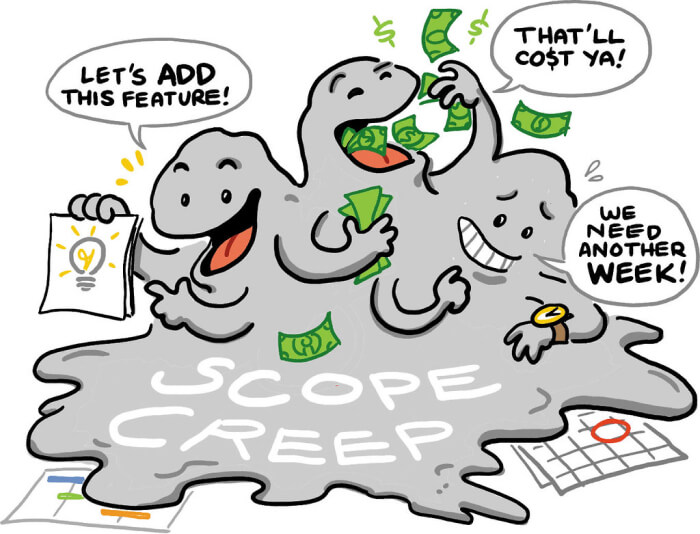Effective Strategies to Meet Software Development Project Timeline


Introduction
Software development involves devising, designing, programming, documenting, testing, and debugging tasks involved in creating and maintaining applications, frameworks, or other software components. In other words, it’s the process of creating standalone or individual software using a specific programming language. Software development involves critical steps like gap analysis, project design, coding, testing, debugging, deployment, and maintenance.
More often than not, the software development process follows different models like Agile, Waterfall, Scrum, Lean, and the like to try to improve the productivity of all involved and the efficiency of delivery. These different models and the management structure may introduce various obstacles that may compromise the software development process leading to missed deadlines or overall software development stall.
A software development project timeline is a detailed roadmap that details the estimated sequence and duration of all tasks required to complete a software development project. It includes milestones, deadlines, and a breakdown of tasks, often presented as a Gantt chart. This timeline guides project managers and team members, helping them understand what needs to be done, by whom, and when. It is a schedule of all project activities, acting as the backbone of any software development project. Adherence to this timeline is crucial in delivering a project successfully as it ensures efficient utilization of resources, aids in risk management, and helps to meet stakeholder expectations.
Challenges in Achieving Software Project Deadlines
Setting Unrealistic Objectives and Deadlines
Due to a poor understanding of the complexity of tasks involved in a software development project, insufficient planning, or simply overly optimistic expectations from the software development team, a project may grapple with unrealistic expectations and project timelines once the development process begins.

Unrealistic objectives often emerge when the project’s goals are not well-defined, overly ambitious, or not feasible, given the project’s resources, budget, or timeline. These involve expecting the software to perform functions beyond its capacity, implementing technology incompatible with the existing infrastructure, or demanding more features than can be reasonably developed within the allotted timeframe. On the other hand, unrealistic deadlines come about due to inadequate consideration of the time it takes to complete each task. It could involve underestimating the complexity of tasks, failing to account for potential setbacks, or not providing buffer times for unexpected delays.
Setting unrealistic objectives and deadlines significantly hurts a project. It leads to stress and burnout among team members striving to meet these unrealistic expectations, potentially resulting in errors, lower-quality work, and loss of capital as resources are over-provisioned to cushion the expectations. Majorly, though, it affects the project timeline for software development.
Scope Creep
Even when the initial project expectations and deadlines are achievable, scope creep may ultimately affect the project deadline. Scope creep, also called requirement creep or feature creep, is a situation in software development project management where the project’s scope that was outlined initially and agreed upon gradually expands beyond its initial objectives. Typically scope creep happens when new features, functionalities, requirements, or ideas are introduced to the project without subsequent increases in resources, time, or budget.
The main reasons for scope creep are:
- Lack of a clear initial understanding of the project’s objectives and requirements by the project manager, the development teams, or the client.
- When the client or project managers change their minds about what they want as the project evolves and continuously add new requests.
- “Gold plating” which refers to the team’s tendency to attempt to improve the project outputs to please stakeholders without considering the impact on resources or time.
- Underestimating the complexity of the software development project.

While change is often inevitable in software development and should be anticipated, uncontrolled change is problematic, leading to cost overruns, missed deadlines, team burnout, and project failure.
Technical Debt
Technical debt is simply code written quickly and easily but is difficult to maintain and change later. It involves postponing necessary work, and instead, the development team chooses a quick but suboptimal solution to save time rather than a superior yet more time-consuming approach. Technical debt is usually caused by developers rushing to meet deadlines, using outdated and unsupported tools, poor documentation, and poor code quality.
Technical accumulates slowly through practices such as deviation from coding standards, insufficient automated tests, and low investment in architectural improvements. The problem with technical debt is that, like financial debt, it incurs interest over time in the form of additional time and effort needed. This effort manifests itself in various ways, including:
- Increase in software maintenance time
- Increase in bug frequency in code which takes more time to debug.
- Reduced speed in the implementation of new features in code.
- Reduced efficiency when introducing new team members since the code is difficult to understand.
Unforeseen Risks and Challenges
Most often than not, the software development landscape constantly changes, and unpredictable risks and problems come with such change. Unforeseen risks and problems, including rapidly changing technology, can significantly impact software development project timelines. The pace of technological innovation is incredibly fast and unpredictable. Consequently, over the duration of a project, especially a long-term one, new technologies or updates may emerge that render the current work obsolete. Obsolete work consequently could necessitate substantial rework of the source code or adjustments to the project plans, leading to deviations from the original timeline.

Unpredicted risks are not just limited to technological changes. They encompass various issues that could emerge during development, such as unexpected bugs, system failures, data breaches, loss of key personnel, or global events like the Covid-19 pandemic. These issues led to interruptions and slowdowns in the project, causing delays that the project development team did not account for in the initial project timeline.
[blog-subscribe]
Poor Communication Strategies
Poor communication, which includes a lack of stakeholder engagement and communication breakdowns among team members, can pose a significant problem to software development project timelines.

Suppose stakeholders like clients, board members, and clients are not regularly engaged, and their input is not included in the software development process. In that case, their feedback may come too late in the project’s lifecycle. Such delayed input often demands a rework and modifications of the process to align the project outcomes with the stakeholders’ expectations. These changes can require additional time and resources, leading to shifts in the original project timeline.
Moreover, poor communication among the project team members can also negatively impact the project timeline. Misunderstandings, incorrect assumptions, jealousy, or lack of clarity on tasks and objectives can result in software errors and inefficiencies in dealing with changing requirements. These issues often create additional time for clarification, resource allocation, corrections, or rework, prolonging the project’s duration and messing up the project timeline.
Resource allocation involves assigning the right people, tools, and materials to the right tasks at the right time. It’s a critical aspect of project management that ensures tasks are completed efficiently and on schedule. If communication within the project team is ineffective, it can result in misunderstandings about the project’s scope, objectives, and requirements, leading to inefficient resource allocation.
Insufficient Testing and Quality Assurance
In software development, testing and quality assurance are crucial stages that ensure the software product is functioning as intended and free from bugs and other issues. They help to verify that the software meets the specified requirements and is ready for deployment. Suppose not enough time or resources are allocated to these stages. In that case, it can result in unforeseen errors and issues later in the development process or even after the end user uses the software, affecting the project timeline.
The discovery of bugs or the need for substantial modifications late in the project or post-deployment can lead to considerable delays. The required fixes or changes can be time-consuming. They might require revisiting previous stages of the development process leading to a cascade of delays affecting subsequent tasks and extending the overall project timeline. It can also impact the project budget due to the extra time and resources needed for unexpected fixes.
Additionally, problems identified late in the process or post-deployment can damage the reputation of the team or the company, which may result in lost user trust or missed business opportunities.
Overcoming Challenges in Achieving Software Project Deadlines
1. Resolve Unrealistic Objectives and Deadlines
The key to avoiding unrealistic objectives and deadlines is thorough planning and clear communication. The planning should be systematic and follow a general flow as shown below:
- Begin with clearly defining the project’s objectives, including the expected functionalities and performance.
- Ensure these objectives are achievable within the project’s resources, budget, and timeline.
- Use effective project management techniques like the Work Breakdown Structure (https://www.projectmanager.com/blog/project-management-techniques-for-every-pm) to accurately estimate the time required for each task.
- Consider potential obstacles and provide buffer times for unexpected delays.
- Regularly review project progress and adjust timelines if necessary.
2. Manage Scope Creep
Prevent scope creep by ensuring clear, agreed-upon project scope and document changes as they occur. Formalize justifying any introduced change and ensure it is assessed for impact on resources and timelines and approved before implementation. Avoid “Gold plating” by ensuring that added functionalities genuinely add value and are necessary. Furthermore, ensure each change in functionality is handled on its own time and should not take time away from another task.
3. Avoid Technical Debt
As we have discussed, technical debt can be a nightmare in a software’s development timelines. To ensure it is handled before it grows its “interest,” do the following tasks:
- Regularly refactor code to improve and update the existing codebase without altering its external behavior.
- Invest time maintaining coding standards, adequate documentation, and regular code reviews.
- Implement automated testing to detect issues earlier using tools like Qodo (formerly Codium) (https://www.qodo.ai/blog/unveiling-the-future-of-streamlined-software-development/ ) to reduce time spent on debugging.
- Stay updated with the latest tools and technologies to avoid becoming obsolete.
4. Mitigating Unforeseen Risks and Challenges
As the project development gets underway, unforeseen challenges arise and may lead to failure if not handled. To prevent this, some key actions should be taken, which include:
- Incorporate risk management in your project planning.
- Identify potential risks and develop contingency plans to address them.
- Stay updated with the latest technological advancements and be ready to adapt.
- Invest in agile methodologies to help better manage change and ensure the project remains on track despite unforeseen issues.
5. Enhancing Communication Strategies and Optimizing Resource Allocation
Communication among team members and between project management and the client is crucial to the ultimate progress of a software development project. Effective resource allocation ultimately hinges on a clear understanding of project objectives and tasks enabled by clear communication. To enhance this communication, various strategies should be adopted. These strategies include:
- Foster a culture of open and regular communication within the team.
- Utilize project management tools like JIRA and Harvest that update everyone about project progress and changes.
- Regularly engage stakeholders and ensure their inputs are incorporated timely.
- Avoid misunderstandings and errors by documenting project requirements, updates, and changes clearly.
- Ensure that roles and responsibilities are clearly defined and communicated.
- Use resource management tools to get a real-time view of resource usage and adjust as necessary to ensure efficient utilization.
6. Ensuring Adequate Testing and Quality Assurance
Testing and debugging are critical in maintaining project timelines, and as such, it is essential to allocate sufficient time and resources to testing and quality assurance from the start. Additionally, project managers should ensure testing is incorporated throughout the development process rather than leaving it all towards the end. This approach allows for earlier detection and fixing of bugs, reducing the need for extensive rework later. Furthermore, automated testing tools like Qodo (formerly Codium) should be encouraged where appropriate to increase efficiency.
Conclusion
In conclusion, managing software development project timelines is a complicated task that involves various challenges. These challenges range from setting unrealistic objectives and deadlines, grappling with scope creep, managing technical debt, mitigating unforeseen risks, enhancing communication strategies, and optimizing resource allocation, to ensuring adequate testing and quality assurance. Each of these hurdles brings unique problems and, if not managed effectively, can disrupt project timelines significantly.
However, these challenges can be mitigated with the right strategies. It requires a well-planned and proactive approach, starting with setting realistic goals and managing scope creep through a robust change management process. Additionally, managing technical debt through regular refactoring and code reviews and preparing for unforeseen risks with agile methodologies and risk management is essential for maintaining the project timeline.
Moreover, critical aspects of successful software development projects are fostering open and transparent communication, optimizing resource allocation, and dedicating sufficient testing and quality assurance time. These measures can help not only in meeting project timelines but also in improving overall project management and outcomes.
Ultimately, the goal is to balance managing these challenges so the team can work with deadlines while maintaining development speed. With thoughtful planning, proactive problem-solving, and effective communication, software development teams can successfully navigate these challenges and achieve their project timelines, thus delivering high-quality software solutions on time and within budget.



